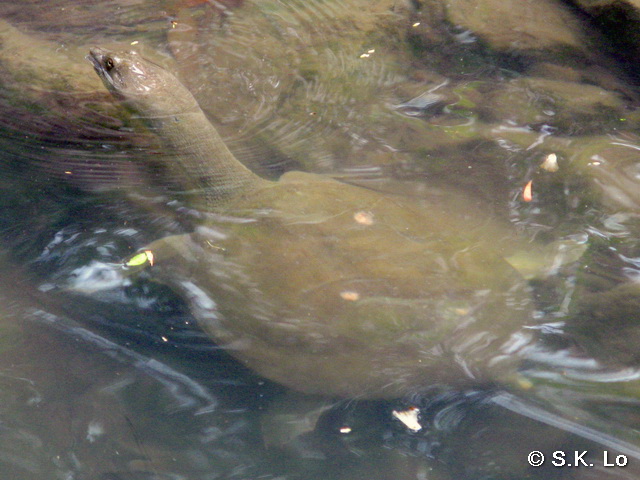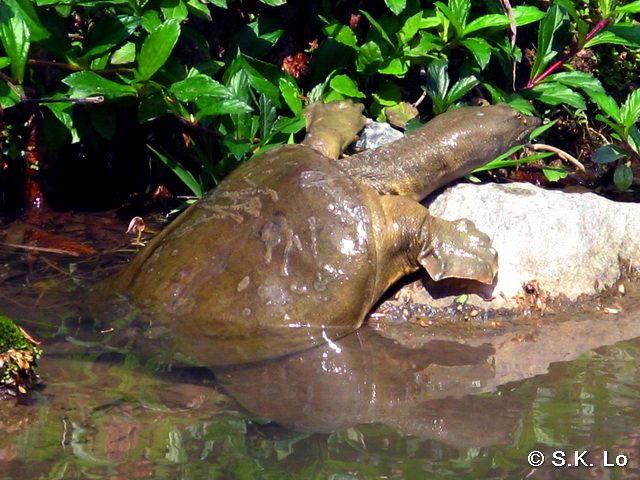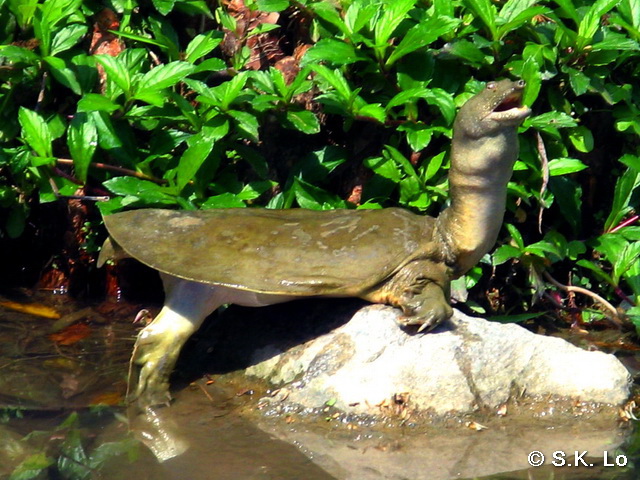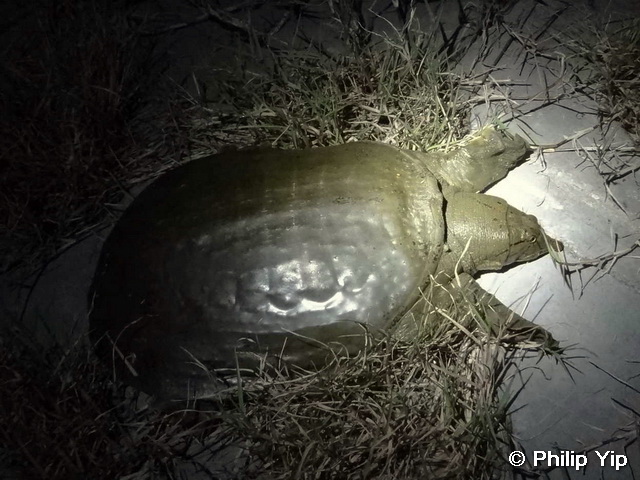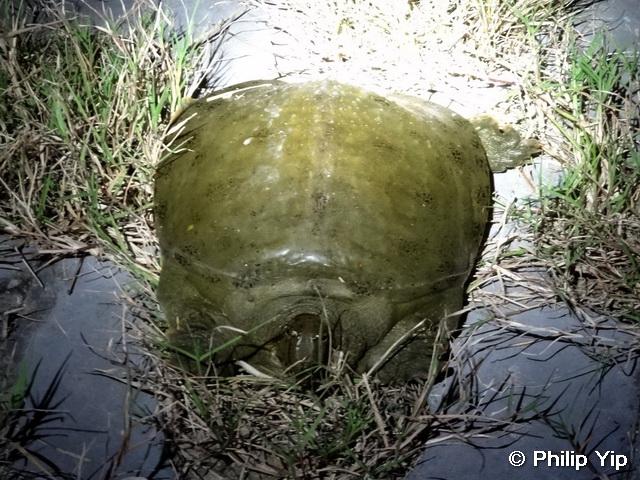Pelodiscus sinensis (Weigmann, 1835)
Chinese Soft-shelled Turtle 中華鱉
Pelodiscus 鱉屬
Body covered by tough leathery skin rather than a shell.
Plastron greyish white.
Head may have lines extending backward behind eyes.
Nostril flexible and pig-like. Neck very long.
Limbs fully-webbed. Each limb has only 3 claws.
Ponds, reservoirs and slow-flowing lowland rivers.
Prefers muddy place where it can be buried.
Aquatic, but can go on land.
Sometimes basks on mud bank or debris on water.
Extrememly vicious in temperament, will snap when handled.
Clutch size depends on body size. Around 4-6 in the first time.
Larger turtle over 500g lay about 24-30 eggs a time; Maximum up to 40 a time.
Lays eggs 3-4 times in a breeding season.
Rare and localized species in Hong Kong.
A natural breeding population was recorded in Deep Bay fish pond.
Specimens found in Tai Tam and Pokfulam Reservoirs were probably released.
Soft-shelled Turtles in reservoirs may belong to other species that have been released by people, such as a specimen of Amyda cartilaginea from Plover Cove Reservoir.
A very common food item sold in Hong Kong Market and restaurant.
Occurs in China, Japan, Taiwan, Vietnam.
Introduced to Thailand and United States.
IUCN Redlist: VU (Vulnerable)
China Redlist: Vulnerable
